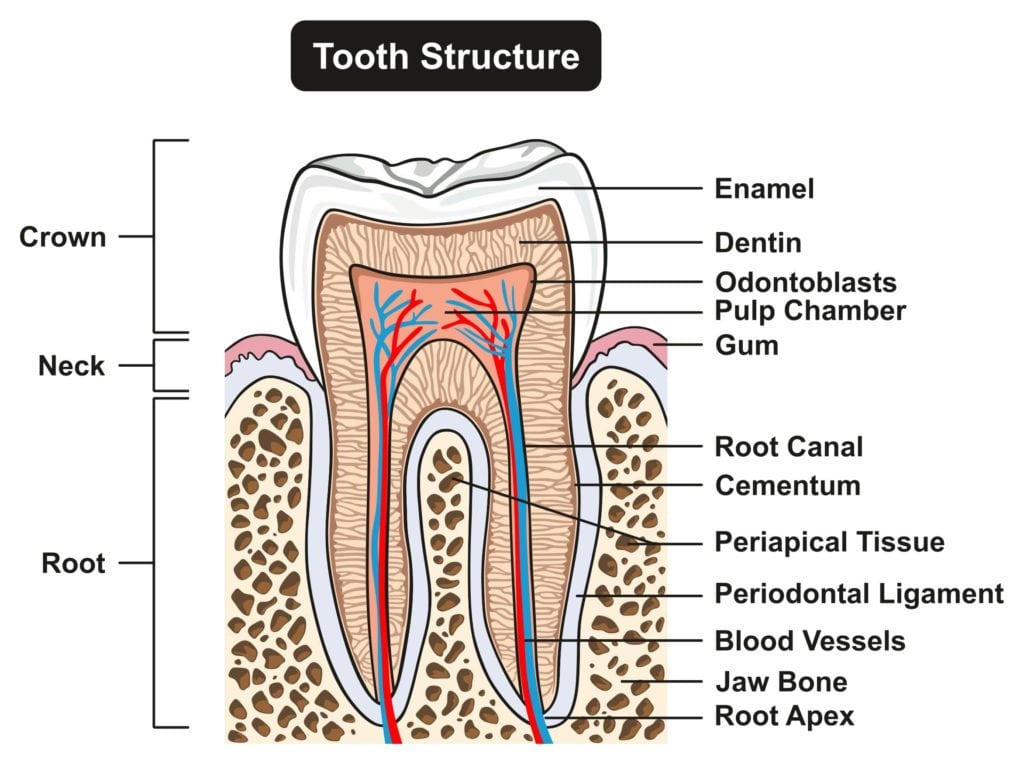There are a series of white monuments that stand within the pink cave that is our mouths, and we all most commonly know them by the name ‘teeth’. But aside from their incredible utility in speaking and eating, how much do most of us know about them? The answer, sadly, is “not much”, a sorry state of affairs when it comes to something that plays such a vital role in our enjoyment of life and the health of our body as a whole. In the following article you’ll get a crash course in the structures that make up your tooth, and the role they play in our oral health.
The Components Of Our Teeth
When we look in our mouths we see a total of two structures related to our teeth, the tooth and the gums they sit in. This simple appearance is actually deceptive as the teeth are not, as they appear, singular structures of indomitable white enamel, but are in fact multilayered and complex. The outer layer, the one that we see most often and serves to protect us from decay and is used in consuming our food, is enamel.
Enamel is the hardest substance in the entire body and makes our teeth capable of processing foods without taking damage. Underneath this lay dentine, a sturdy yet porous substance that allows sensation to be transmitted between the surface of the tooth and the root below. When exposed by decay dentine can be the source of tooth sensitivity and pain in general. Deeper within the tooth lay the pulp, the actual ‘living’ portion of the tooth that contains the root of the tooth and is where blood flow enters and leaves it to keep it alive. Finally, there’s cementum, a substance that connects the root of the tooth to the jawline. While not as strong as enamel it is generally covered by the gums and thus protected from infection and decay.
Beneath The Teeth – The Gumline and Jaw
Supporting your teeth is a series of structures that help to protect them, keep them firmly mounted in place, and aid in chewing and digestion. These structures are the gingivae, or gums, which are responsible for protecting the roots of your teeth and jaw and sustaining blood flow. The mouth itself is lined with the oral mucosa, the moist tissue that lines your cheeks, lips, and the rest. Finally are the periodontal ligament, which helps to secure your teeth to your jaw and soften the shock of the chewing process at https://cbdschool.com/.
There you have it, the vital components of your teeth that go largely misunderstood by the average patient. It’s strange that we take so little interest in these structures that accompany us throughout our lives and are the subject of so much concern and attention, but every year Dr. Xiaofeng Wang at Forest Hill Family Dental sees patients who are fascinated to learn the kinds of things you just learned in this article! If you’re looking for a dentist who believes in education as part of their practice, pick up the phone and make an appointment today!

